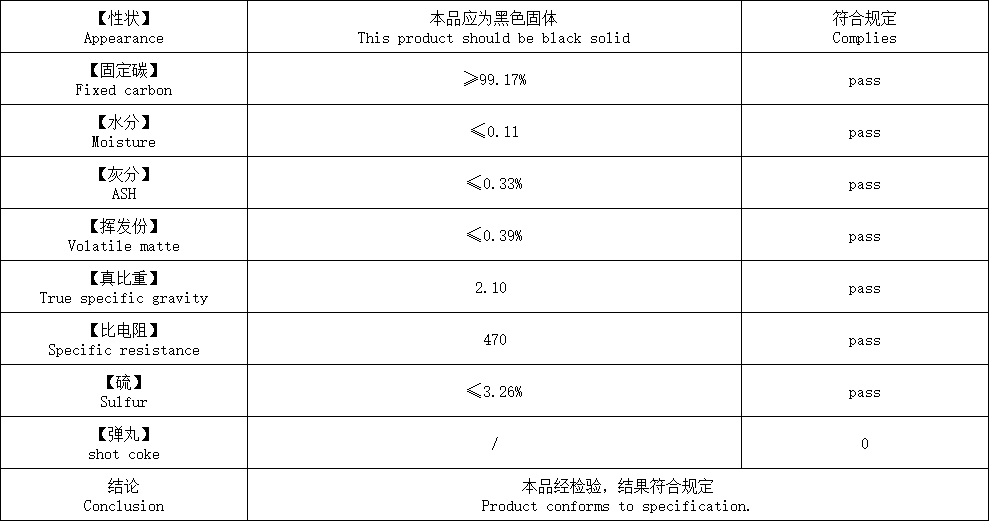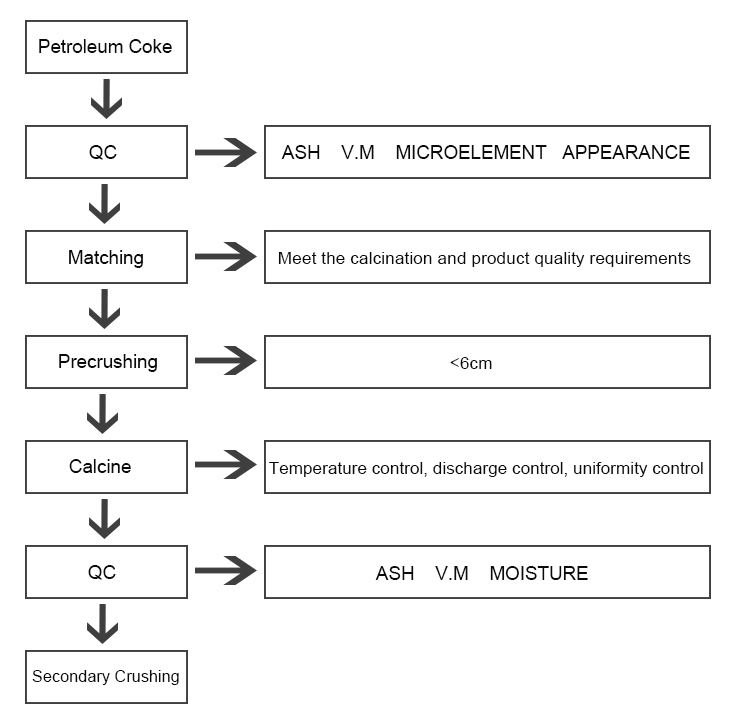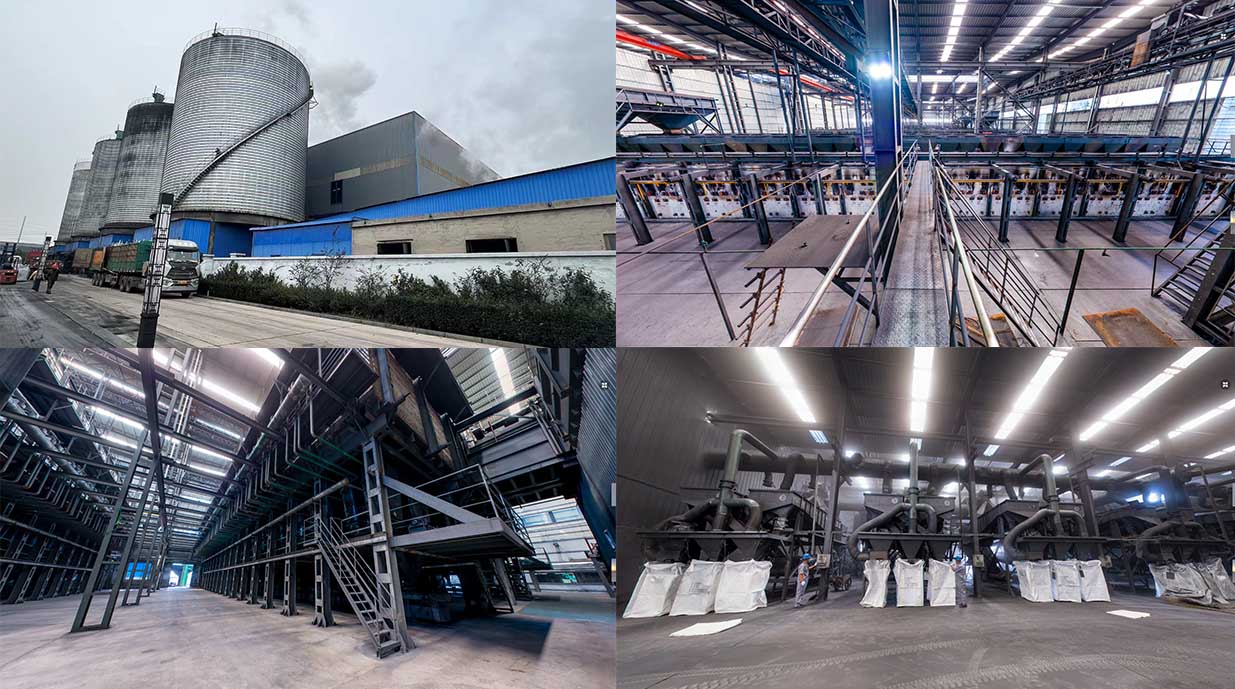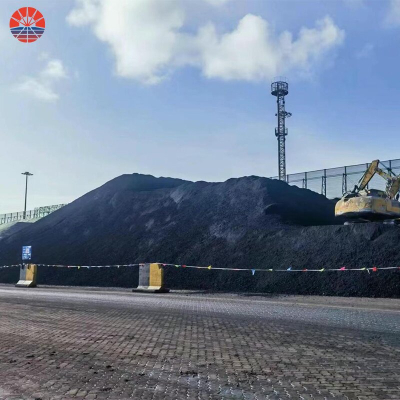Calcined Coke Production
Calcined petroleum coke is a high-quality carbon material derived from petroleum coke through a calcination process. The calcination process involves heating raw petroleum coke to remove volatile matter and moisture, resulting in a solid carbon material with improved properties. Here is a general overview of the production process of Calcined petroleum coke:
Raw Material Preparation: The primary raw material used for calcined petroleum coke production is petroleum coke. Petroleum coke is a byproduct of the refining process and is obtained from crude oil or tar sands. The raw petroleum coke is typically stored in large silos before further processing.
Crushing and Grinding: The raw petroleum coke is usually crushed and ground into a fine powder to facilitate the removal of volatile matter during the calcination process. This step increases the surface area of the coke particles, allowing for better heat transfer and more efficient removal of impurities.
Drying: Before the calcination process, the crushed and ground petroleum coke is typically dried to remove any remaining moisture. This step is essential to prevent excessive steam generation and to ensure efficient heat transfer during calcination.
Calcination: The dried petroleum coke is then subjected to high temperatures in a rotary kiln or vertical shaft kiln. The temperature ranges from 1200°C to 1350°C (2192°F to 2462°F) depending on the specific requirements and desired properties of the calcined coke. The calcination process removes volatile matter and other impurities from the coke, leaving behind a solid carbon material with high carbon content.
Cooling: After calcination, the hot calcined coke is cooled either in a rotary cooler or an air-cooled system. This step is important to reduce the temperature of the coke and prevent further reactions or combustion.
Screening and Sizing: The cooled calcined coke is then screened to remove any oversized or undersized particles. The coke is usually sieved to obtain the desired particle size distribution, which can vary depending on the intended application.
Packaging and Storage: The final step involves packaging the calcined petroleum coke into bags, bulk containers, or other suitable forms for transportation and storage. The coke is usually stored in warehouses or stockpiles to maintain its quality until it is ready for use.
It's worth noting that the production process may vary slightly between different manufacturers and depending on the specific requirements of the end-use applications. However, the general steps outlined above provide a typical overview of the calcined petroleum coke production process.
CPC role of the negative material
Calcined petroleum coke (CPC) plays a crucial role in the production of negative electrode materials, particularly in lithium-ion batteries. Here's an overview of its role:
Carbon Source: CPC serves as a high-quality carbon source for negative electrode materials in lithium-ion batteries. It provides a carbonaceous matrix that can reversibly store and release lithium ions during charge and discharge cycles. The high carbon content of CPC, typically above 98%, ensures a high capacity for lithium storage.
Electrical Conductivity: CPC exhibits excellent electrical conductivity, which is essential for the efficient transport of electrons within the negative electrode material. This conductivity facilitates the flow of current during the charging and discharging processes of the lithium-ion battery. The high electrical conductivity of CPC ensures minimal resistance and improved overall battery performance.
Stability: The calcination process during the production of CPC helps enhance its structural stability. This stability is important for negative electrode materials to maintain their integrity and performance over multiple charge and discharge cycles. The stable carbon structure of CPC contributes to the long-term durability and reliability of the negative electrode material in lithium-ion batteries.
Surface Area and Porosity: The surface area and porosity of CPC can be controlled and optimized during its production. This feature is beneficial for negative electrode materials as it provides a large contact area between the carbon matrix and the electrolyte. This increased surface area allows for better lithium-ion diffusion and more efficient electrochemical reactions, leading to improved battery performance.
Low Impurity Content: Impurities in CPC can have adverse effects on the performance and stability of negative electrode materials. Therefore, high-quality CPC with low impurity levels is preferred for lithium-ion battery applications. Low impurity content helps minimize side reactions, electrode degradation, and capacity loss during battery cycling.
Overall, calcined petroleum coke serves as an excellent carbon source with high electrical conductivity, stability, and optimized surface characteristics for negative electrode materials in lithium-ion batteries. Its properties contribute to the efficient and reliable operation of the battery, ensuring high energy density, cycling stability, and prolonged battery life.










